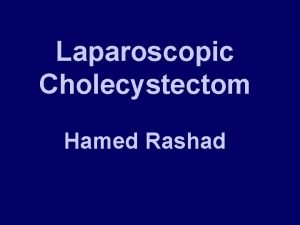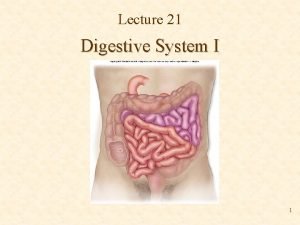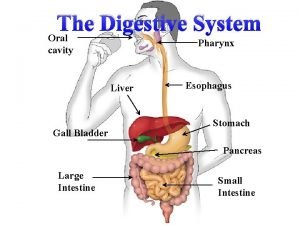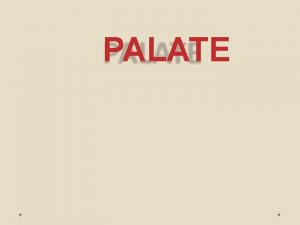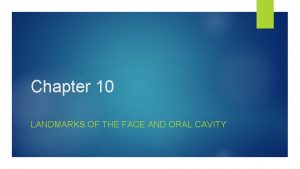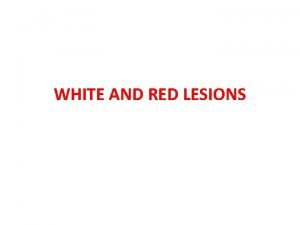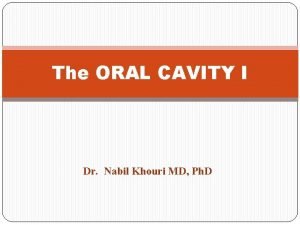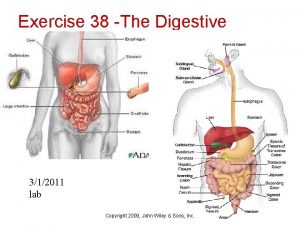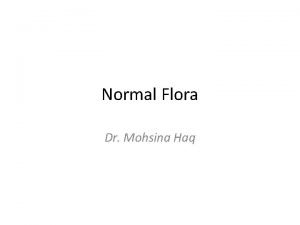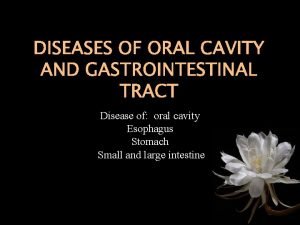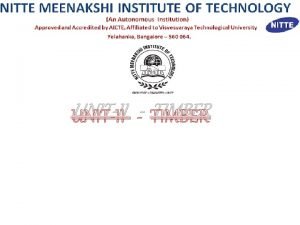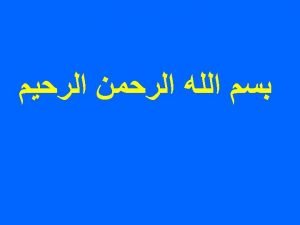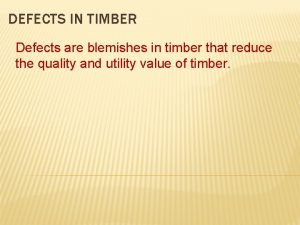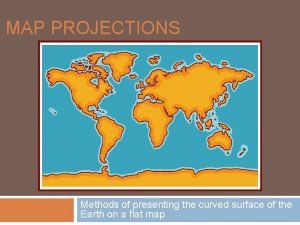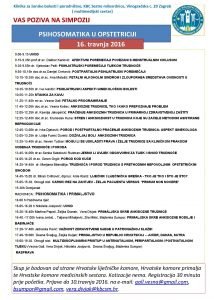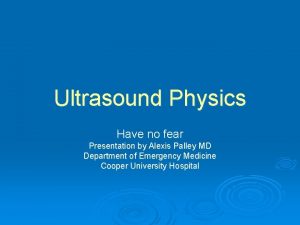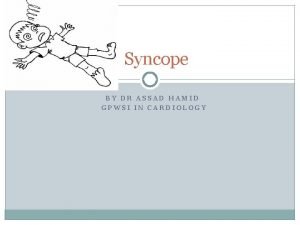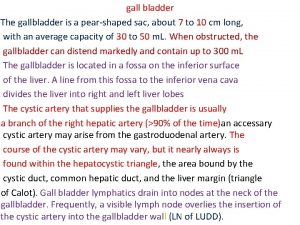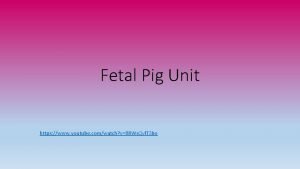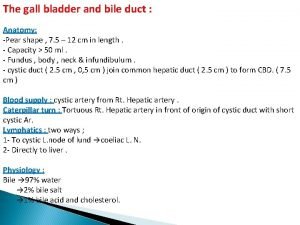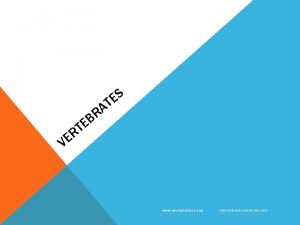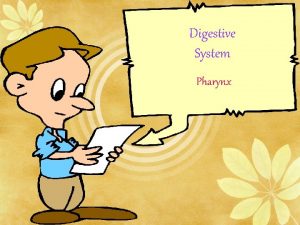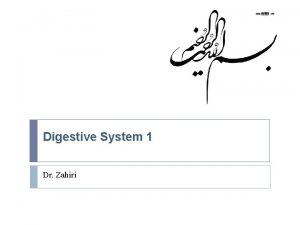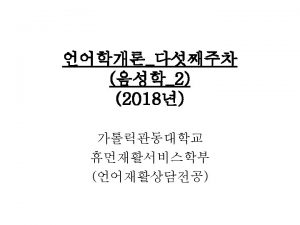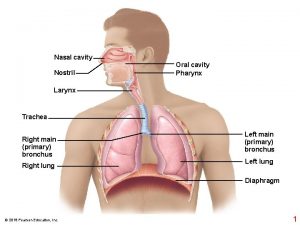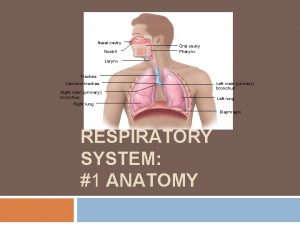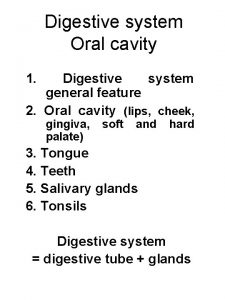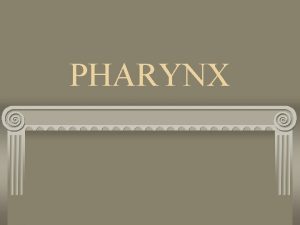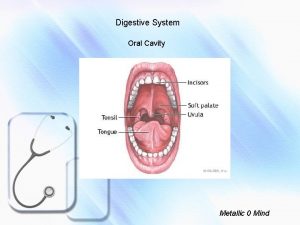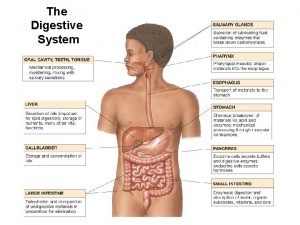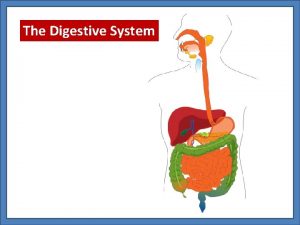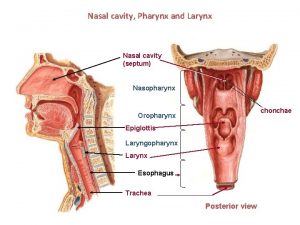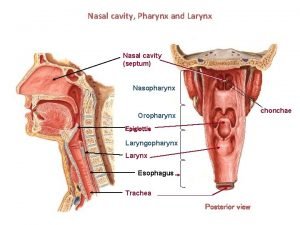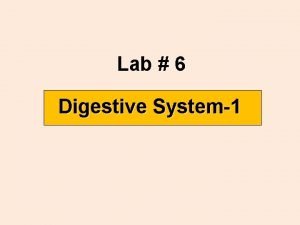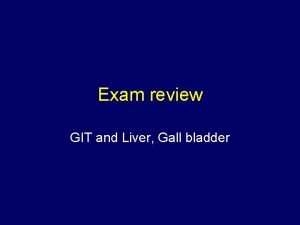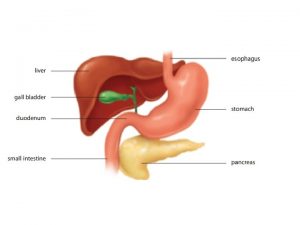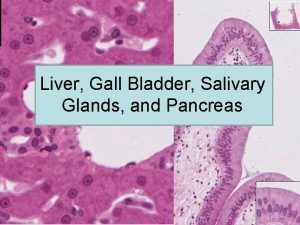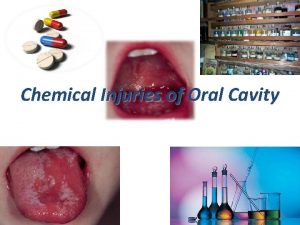The Digestive System Oral cavity Pharynx Liver Gall




























- Slides: 28

The Digestive System Oral cavity Pharynx Liver Gall Bladder Esophagus Stomach Pancreas Large Intestine Small Intestine

• Function: Break down food into molecules that can used by cells • Enzymes, acids, hormones, bile aid in breakdown • Sphincters (ring of muscle) separate sections • Nutrients passed into the circulatory system to be distributed in the blood Click pic to play

Click pic to play

Oral cavity

• Mechanical digestion: Teeth grind food • Chemical digestions: Saliva (amylase) begins to breakdown starches • Bolus is created (ball of chewed & moistened food)

Click pic to play

Pharynx

• Epiglottis seals off the trachea • Bolus pushed down the esophagus by the tongue

Esophagus

• Connects mouth with stomach • Peristalsis: Muscular movement pushes food along – Bolus pushed down the esophagus by muscles Click pic to play

Stomach

Click pic to play • Function: Prepares food for absorption • Chemical digestion – Pepsin (enzyme) digests proteins – Stomach acids mix • Mechanical digestion – Muscles contract to churn the bolus (~4 hours) • Chyme created: pastelike mixture of food, enzymes, acids • Peristalsis pushes chyme through sphincter

Small Intestine

• Function: Absorption of nutrients • Duodenum – Chemical digestion: Enzymes from the liver, gallbladder, pancreas released to aid digestion – Mechanical digestion: Muscular contractions mix & churn the chyme • Peristalsis pushes the chyme along • Nutrients absorbed into the capillaries of the s. intestine

Click pic to play

Liver Gall Bladder

• Functions: – 1) Break down toxic chemicals (alcohol) – 2) Produces bile to break down fats • Gall Bladder: Stores bile until chyme moves into duodenum

Click pic to play

Pancreas

Click pic to play • Functions: – 1) Release enzyme into duodenum to break down starches & lipids – 2) Releases insulin into the blood (diabetes)

Large Intestine

• AKA: Colon • Peristalsis continues to push the chyme • Remaining water is absorbed from the chyme – Undigested material solidifies (feces) • Nutrients from bacteria absorbed • Feces exits the body through the rectum & anus

• The liver is labeled which letter? L • K

• The pancreas is labeled which letter? L • D

L • Which letter begins the process of chemical digestion? • L (salivary glands)

• Most nutrients are absorbed at which organ? L • E (small intestine)

• Which organ helps digest fats? L • K (liver)

Label the letters of the diagram L A = esophagus B = I don’t care C = stomach D = pancreas E = Small intestine F = Large intestine G = Rectum H = appendix I = duodenum J = gall bladder K = liver L = salivary glands
 Vertebral cavity
Vertebral cavity Cholecystectom
Cholecystectom Pharynx and oral cavity
Pharynx and oral cavity Function of duodenum
Function of duodenum Label the abdominal regions.
Label the abdominal regions. Abdominopelvic cavity regions
Abdominopelvic cavity regions Greater and lesser sac
Greater and lesser sac Epiploic foramen boundaries
Epiploic foramen boundaries Digestive system circulatory system and respiratory system
Digestive system circulatory system and respiratory system Interpalatine suture
Interpalatine suture Landmarks of the mouth
Landmarks of the mouth Classification of white lesions of oral cavity
Classification of white lesions of oral cavity Median palatine raphe
Median palatine raphe Monophasic liquids are prepared with which solvent
Monophasic liquids are prepared with which solvent Exercise 38 review sheet art-labeling activity 3 (1 of 2)
Exercise 38 review sheet art-labeling activity 3 (1 of 2) Normal flora of oral cavity
Normal flora of oral cavity Sialedinitis
Sialedinitis Rind galls in timber
Rind galls in timber Liver lobules
Liver lobules Jürgen gall
Jürgen gall Twisting defect in timber
Twisting defect in timber Gall-peters projection pros and cons
Gall-peters projection pros and cons Dalibor karlović
Dalibor karlović Alexis z gall
Alexis z gall Dr nick gall cardiologist
Dr nick gall cardiologist Pear shaped sac
Pear shaped sac Salivary glands fetal pig
Salivary glands fetal pig Liver bile duct
Liver bile duct Koi fish
Koi fish

